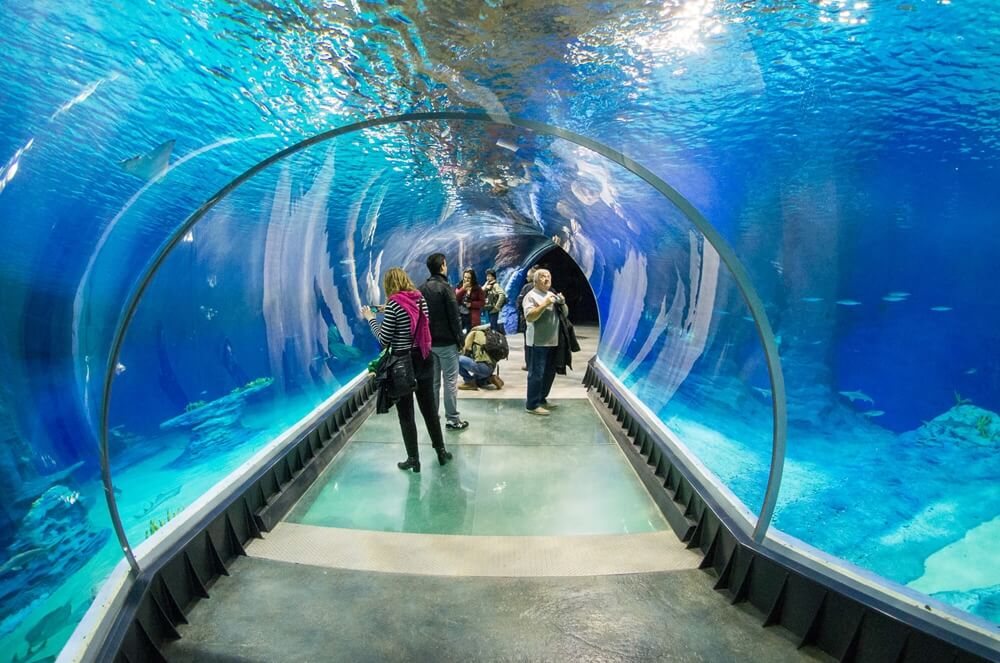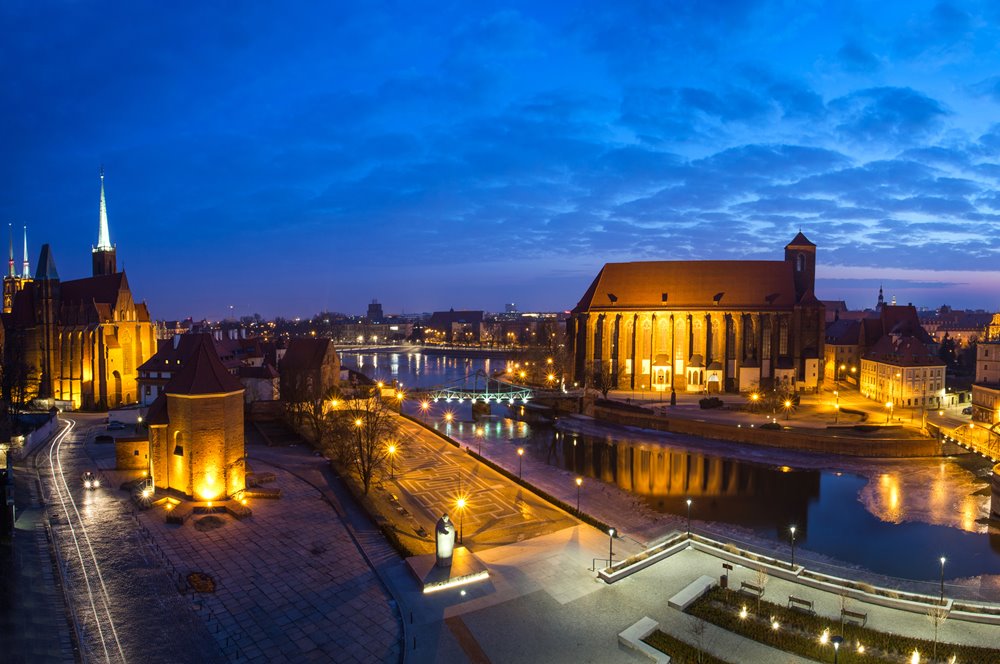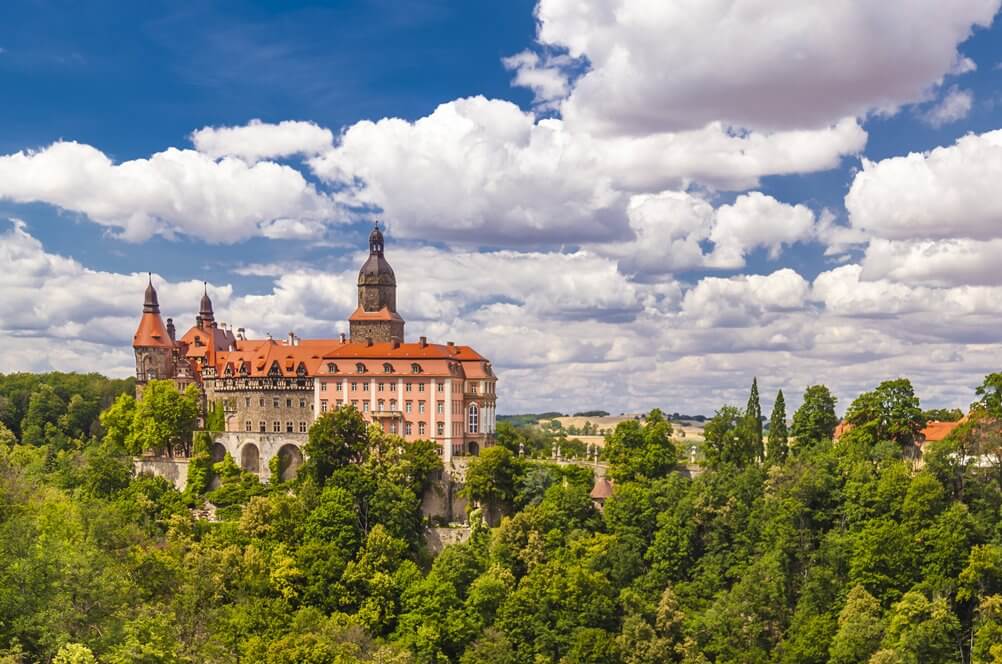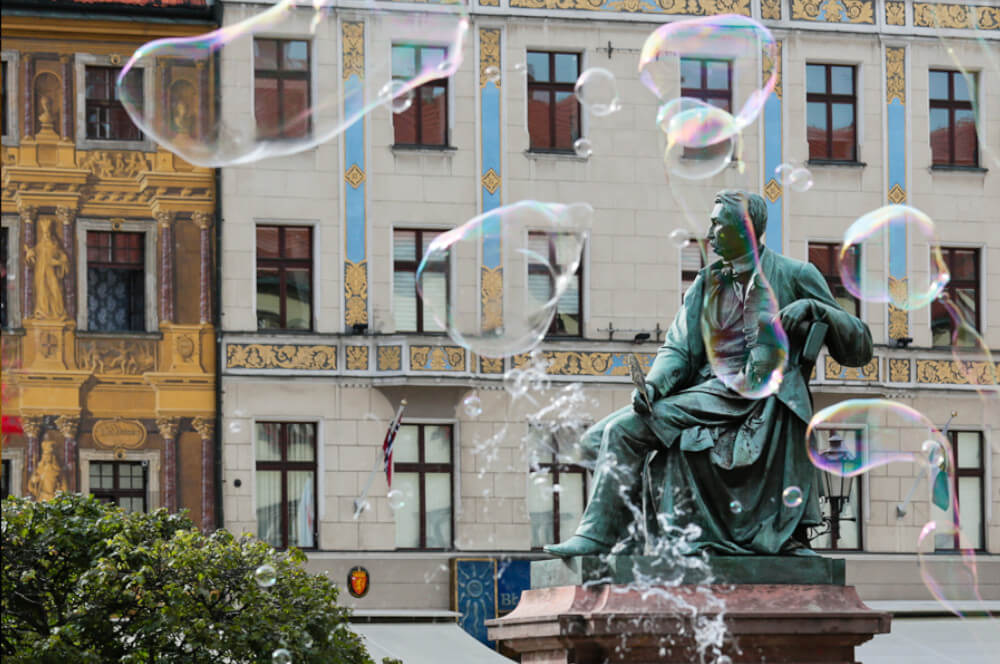Let me introduce you to the famous islands of Wroclaw – the Cathedral Island and the Sand Island. This area is by far one of the most interesting places of Wroclaw and in fact the oldest part of the city.


The most prominent structure on the Cathedral Island is the Gothic Cathedral of St. John the Baptist. Do you know that the current Cathedral is actually the fifth cathedral to be built on this site? The previous Cathedrals were either destroyed by pagans and bishops who wanted to extend the existing building, or finally in the great wars. The Gothic Cathedral we see today survived well until almost the last months of World War II when in 1945, German soldiers unfortunately decided to use the cathedral as an ammunition storehouse. During the air raids, the spires of the towers collapsed onto the naves, sadly destroying the vaults. The remaining destruction was brought about by fire, leaving approximately 70% of the church completely damaged.
After the war, locals considered leaving the cathedral as a permanent ruin - a monument to World War II if you will or demolishing it completely and building a new one. In light of the city’s emotional attachment to the Cathedral, the governmental authorities of the time decided to rebuild the Cathedral and on 29/07/1951, the first holy mass was celebrated, led by Cardinal Stefan Wyszynski.
There are numerous treats for lovers of architecture inside the cathedral; 14 Gothic chapels, 4 Baroque chapels and one of the biggest organs in the world, which was brought after World War II from Wroclaw’s modernistic Centennial Hall. The organ can play 151 voices and has a total of 13275 pipes, with the smallest pipe being 2cm tall and the largest, made of steel and wood at a staggering 12 metres.
Walking around the island, our guests have chance to discover that the Leaning Tower exists not only in Pisa but also in Wroclaw! Near the small Church of St Gilles (which is the oldest Romanesque building still in use in our city) you will find the early Renaissance Chapter House. The building attached to the Archdiocese Museum has its southern tower tilted toward the street confirming that we also have our very own Leaning Tower of Wroclaw!


Close by, a beautiful brick arch called The Dumpling Gate connects the church with the old Chapter House. Legend has it that the round stone decoration on the top of the arch supposed to be the Silesian dumpling that once upon a time jumped out from the pot of the disobedient widower Konrad. His deceased wife offered him a pot full of dumplings and asked him to always leave the last dumpling in the pot in order to keep it full. Unfortunately, he forgot about his wife’s request and tried to eat the last dumpling, but he couldn’t put it on the spoon. The dumpling jumped out of the pot, sat on the arch and turned into a stone. It remains today as a permanent reminder to passers-by to listen to their wives!
In this part of the city we also meet the Lamplighter. The first gas lanterns on the Cathedral Island were lit in 1860’s. About hundred years later, the lanterns have slowly been replaced with electric streetlights, sadly leaving only 2 working gas lanterns on the Cathedral Island. Thankfully, in 1982 the city council, decided to bring back 80 working gas lanterns to this wonderful location. These days our visitors can see 104 gas lanterns and the two Lamplighters doing their job every single day. Their duties include cleaning the lantern glass windows and escaping from tourists chasing them around the island for photo opportunities!
Our tour now leaves the Cathedral Island as we cross Tumski Bridge. The bridge has been used as the border for the church’s jurisdiction. Up until 1818, there was a boundary post in the middle of the bridge clearly showing representatives of the secular authorities that their laws don’t apply on the holy grounds of the island. Until recently the bridge was overgrown with padlocks placed on the railings by love birds, convinced that love happens only once in a lifetime. In July 2019, the padlocks were removed permanently, however, for those who want to keep their love safe, the city council prepared a cute rescue plan. Padlocks could be collected and signed for, along with a receipt to show that it belongs to you! But just so you know, they don’t plan to collect the keys from the bottom of the river! We don’t know the exact number of padlocks that were on Tumski Bridge, only that the first batch weighed in at approximately 5 tonnes!
Speaking of love, the great lover Casanova visited Wroclaw briefly in 1776. His visit lasted a mere 3 days and was thought to be very necessary as he was fleeing Warsaw after one of his ‘adventures’. Casanova, even during his short visit, found another object for his love – a 25-year-old governess. He quickly convinced her to travel further in his company and although she looked quite innocent, she was not at all pure and virtuous. Within just 2 weeks she had spent most of his money, cheated on him with a number of his friends and passed on quite a shameful sexual disease!


The Sand Island, on the other side of Tumski Bridge has the biggest Gothic church in Wroclaw – the Church of Our Lady on the Sand. The church, together with the adjusted monastery was built by some rather ingenious Augustinians monks who came to live in Wroclaw in the 12th century. As the Sand Island used to be a part of the Amber route, connecting the lands of the Adriatic with the Baltic Sea, the monks made sure that everyone passing the Sand Bridge on the island had to pay a toll. Today, the iron Sand Bridge from 1861 is the oldest existing bridge in the city to date.
Before we leave the left bank of the river, let’s have a quick look at the Market Hall, founded by the city council in 1908. This hall was built to eliminate street trade and its poor sanitary conditions and to offer prestige to the city. The outside construction often reminds visitors of a castle, but the inside was in fact built from reinforced concrete, a truly innovative process of the time, creating the absolute best place to trade for the vendors.
We invite you to join our Famous Islands of Wroclaw walking tour and experience Wroclaw with Meet My City!





